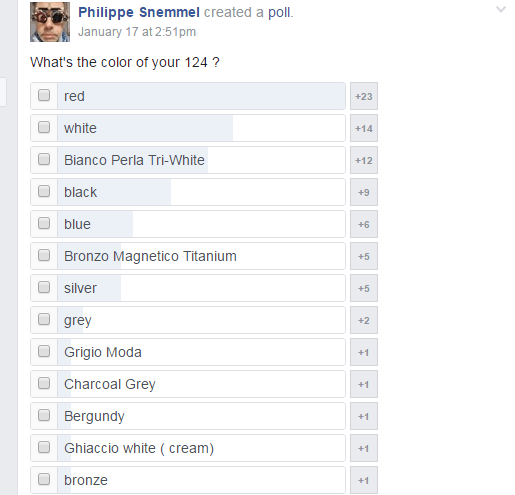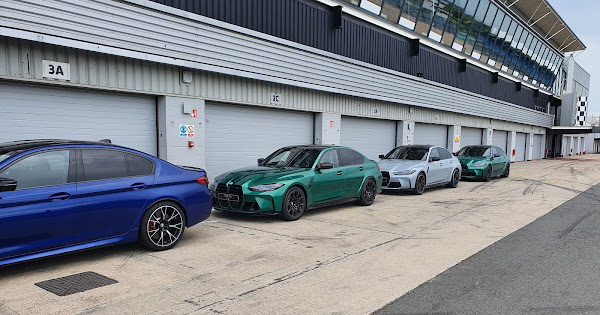I looked at the Spirited Green, before I went with my colour as I thought it would soon look dated. I’ve only seen a couple on the road, but they do make your head turn!!
Here is BMW’s take on it. To my knowledge there is not a yellow M Sport option. However, of all the colours they presented, the Isle of Man Green, and for that matter the dark blue were the least “desirable” colours. The green was different, but ultimately, to my eyes at least, just a bit dull and hard work. The Grey was the stand out colour.
I thought you had more knowledge than that!
40% of the Yellow Arizona still exist and 20% of the California
I loved this car and like probably a few on here with past cars I regretted selling it. The colour isn’t to every taste, sparkled in the sun.
BTW, absolutely rust free when I sold it, regrets.

Same colour as my NB. My dad still has the car.
Thank you for giving me the figures. Which is exactly the point.
To your figures that would mean that 300 California’s and 375 Arizona’s were sold across a 17 year period. 22 a year on average, not exactly setting the sales figures alight.
Mazda Europe sold close to 7,000 MX-5’s last year. Even in these sales depressed times, if the UK only took 1,000 of them, that is still 2 and a half times bigger than 17 years of yellow MK1 and MK2 sales. In the ocean of MK1 and 2 sales in the UK, which is probably in excess of 50,000 cars, 375 yellow ones at less than 1% is not a lot.
And the ultimate question that Mazda will know is, did those 375 yellow cars result in sales they would not of got if yellow was not available or would they have had the same volume if they had made those cars in another colour?
California 1995 only Arizona 2002 only
I wonder how you work out that a premium on the price of a second hand car is down to its rare colour, and not its owner’s greed, and how do you know whether it sells for that inflated price?
And if you can work that out, why are so many car buyers worried about the resale value of an unusual colour?
Personally, I do not worry about it, by the way…
At last week’s Solent run the most popular colour by far was bright orange, 25% or four out of the cars present
Someone once told me that people don’t like drivers of red cars as they think they’re aggressive! I couldn’t be a more defensive driver in my True red nc, but I love to boot it given the opportunity 
The Puma was a special edition Millennium model along with the Ka and Focus. Not many were made hence not many on the road. I worked for Ford then. The Puma sold immediately in Yellow but the Focus was only the five door model which was a mistake. The three door would have been better. Many customers asked for it.
Someone in the UK wrapped an ND Ceramic Recaro in yellow. Looked stunning.
Quite often the manufacturers don’t have a clue about what is needed, just go by a marketing “focus group,” and the retailers just have to shift what short shrift they’re given.
When I lived in Africa most cars wore very light colours, white was most popular with pale blue, pale green next.
Why?
-
Light colour cars were so very much cooler inside. (No air-con for most in those days)
-
Midsummer midday sun could lift dark cellulose-based paint off the metal, and very few vehicles were stove enamelled (eg Beetle). Other colours rapidly faded, so they soon matched the paler originals.
When we lived near the Zambezi our neighbour was a mining engineer who drove a 1948 Plymouth same shape as this immaculate earlier one, but his was without any of the original black paint on the upper surfaces.
Out prospecting in the veldt he used to cook his lunch on the bare metal of the bonnet at midday, a fry-up of sausage bacon and eggs, with the teapot (kettle? what kettle) simmering on the other side of the centre strip.
It might have been made in Aus or South Africa because I seem to remember (wrongly?) it was RHD.
I was on the NC focus group in Frankfurt. along with other MX5 owners. Maybe that explains it.
Easy I suppose blaming Mazda. The Fiat Spider, sold in an array of non-Mazda colours, but which was essentially the same car, is no more. Canceled due to pathetic sales. Fair few in red, but white-greys were popular.

Ah, you were in a Customer “focus group.”
These are set up to lull the customers into thinking they have some influence over Marketing.
I saw electronic equipment ‘Marketing’ from the engineering side, some of the requests were lunatic re functionality and cost. A couple were merely to find another box to tick that nobody would use, and with an impossible deadline. Showing the extra time delay and cost was the only way to squash most of them.
I walked away in the end.
I’m sorry to sound bitter and I’m not criticising you, just the corporate model, but in my case there was a silver lining: taking early retirement was the best thing I ever did!
Around 2001, Mazda had several focus groups for the upcoming NC, both sides of the Atlantic, involving MX5 owners and non-MX5 owners.
I was known to Mazda for my activity within the UK MX5 scene at the time, and a couple of us from the UK attended.
Part of the session was for Mazda to understand how the MX5 fitted into the market in 2001. Remember, in 1989, their view of the market was based on 1980; they were looking at Spitfires, MGBs etc.
By 2001, the MX5 had competition. At the session, Mazda identified the Z2, MGF, Elise, MRS and Barchetta as the direct competition. I guess they wanted to find out, given Mazda had reinvented the segment in 1989, were they setting the agenda, or was. One aspect they were asking a lot of questions about was the powerplant; should they go with a V6 came up. Peter Birtwhistle was in attendance (his personal car was a black FD, his Mazda claim to fame was the sexy looking 323F), and interestingly, he divilged that the Mazda engineers were seriously looking at a diesel MX5 at one point. They liked the characteristics of a good diesel, as thr bottom end torque would get them closer to that “British sportscar” feel. The killer was the cost of a diesel. It cost twice as much as the petrol engine, and margins on the MX5 were slim. They had also thought about “popups”, or rather a lighting solution that was like the XJ220; lids that slid back to reveal headlights, but the cost was too high.
The second half of the session was when the psychologists turned up with cameras to film reactions to revealed selected portions of quarter scale models. Several radically different designs were presented (looking back these were the 2x Japanese design submissions (one of which was the NC), a US submission (an Elise like design) and a European design (very jaguar-Porsche looking, looked expensive).
The first half was certainly about helping their marketing. The second half; in 2001, development was still at an early stage, and Mazda’s interest in us might have relfected a loss of nerve in producing the tricky third album, given most of the original team had long departed.
I’ve conducted focus group sessions before. My groups I suppose you could call them Special Forces Operatives. I designed devices used by them, but needed their feedback at various stages of the design process, to understand CONOPS, and understand pragmatic utilisation of equipment on operations. It was nothing to do with marketing. It was 100% to do with ensuring that service personnel had the best possible equipment available to them, that was effective and safe. Given the organisations I worked with, it was a rare opportunity to work closely with boots on the ground, and it lead to genuine system improvements.
My comment “maybe that explains it” was a flippant remark, reflecting my overall opinion of the NC. I view it as a low point in the history of the MX5, though owners are obviously satisfied with this car for their particular needs as transport.
Lol… I must fit the stereotype.
Two days ago, a new work colleague I’ve previously had a run-in with said to me: “I heard you have an MX-5. I used to have one. Best car ever.
Which model do you have?”.
As I pointed Nugget out to her through the window, she said:
“Ah, of course, it had to be red…”!
Thanks! That is very interesting. I enjoy hearing from others who have been through this sort of development. Clearly Mazda were trying to do the right thing regarding the engineering.
It fits our early development cycles, except we called it engineering research, identifying a commercial market niche to pay for a solution we had found to a new tech problem that might reach the public in anything from six months to ten years time.
We had to find commercial partners, and unfortunately a lot of them were effectively just sales people from outside the product’s actual market with no idea about the engineering, its costs and timescales, and expected miracles, or else were foreign manufacturers simply interested in stealing our novel ideas.
It was very difficult being diplomatic, and a few years later I found out some of them were very good at evading the nitty-gritty of due diligence searches (putting it politely).
I think most design engineers have been there. I had endless battles with Marketing, who’s idea of product specification was to take the sales brochure of the competitor and enlarge it 10% on the photo copier. A great example must the the washing machine. 17 or more different wash programs of which 90% of users will only ever use 2. Being able to turn your sales literature to “11” obviously is the way to go! 
I travelled to many, many countries, working with users of our equipment, and the question I asked was not “what do you want” but “what is it about our machine that makes your life harder.” I wanted to know not what they thought they wanted, but what they knew didn’t want.
I looked at the cars in the Porsche Experience Centre at Silverstone today. Of the 100 or so cars of a variety of colours, including powder blue Macan’s they have, only 2 cars were yellow. There was a Boxter, and the other one was a GT4, fully liveried up as The Porsche Centre.
Sacrilege! ![]()
Rob
